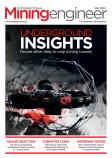Since the phasing out of canaries in the UK some 30 years ago portable and fixed gas monitoring instruments have taken over. Maurice Jones reports
The miner’s safety lamp and caged canary are emblematic of traditional mining, particularly in coal.
While both these ancient methods are associated with preventing the accidental breathing of ‘nasty’ gases, their purposes are quite different. The flame lamp was, and is, used by a trained individual to test for the presence of methane (fire damp) in explosive or near explosive mixtures.
Extinguishing of the flame can also warn of insufficient oxygen. Canaries were used, at least by rescue teams, chiefly to warn of the invisible, odourless, headache-inducing and ultimately fatal gas carbon monoxide such as generated by combustion in insufficient oxygen. The reliance is that the canary would succumb to the toxic gas before human metabolism, but research later showed that this was not always the case in certain concentrations and exposure times.
In theory, the use of ‘electronic canaries’, as they were first called, and other gas monitoring devices takes out all the guesswork, providing an accurate reading of the gas in the atmosphere. In the context of mining the gases that may be required to be monitored can include methane, carbon monoxide and oxygen (deficiency), plus hydrogen sulphide (poisonous stink damp – sometimes produced from iron pyrites corrosion). There may be also a need to monitor for nitrogen oxides as well as carbon monoxide from blasting fumes and unprotected internal combustion engines.
The electronic devices give direct digital readouts of the gas concentration being monitored and can be set to give audible or visual alarms when a hazardous concentration is being approached or a lower explosive limit (LEL) for inflammable gas mixtures is reached.
Trolex says that a major development area is improved communications, including Wi-Fi, to transmit readings and alarms to a central location for rapid action or data processing. Another is the wider use of multiple gas instruments to give a broad picture of potential hazards rather than only one or two.
Trolex’s Sentro 8 is a flexible multi-gas monitor that also checks on temperature, air flow, humidity, pressure, etc. One application is on major pieces of equipment such as tunnel boring machines that are being used increasingly in mining. The Sentry is a transportable development of the ‘fixed’ Sentro 8 as used in refuge chambers made in the US and China. The Sentry is MSHA and ATEX approved. One of Trolex partners is the refuge chamber manufacturer Strata Worldwide of the US.
Video: Miners took caged canaries into coalmines in order to provide warning of the presence of toxic gases, including carbon monoxide and methane. Canaries would visibly show distress and sway on their perches in the presence low concentrations of carbon monoxide before toppling over





















